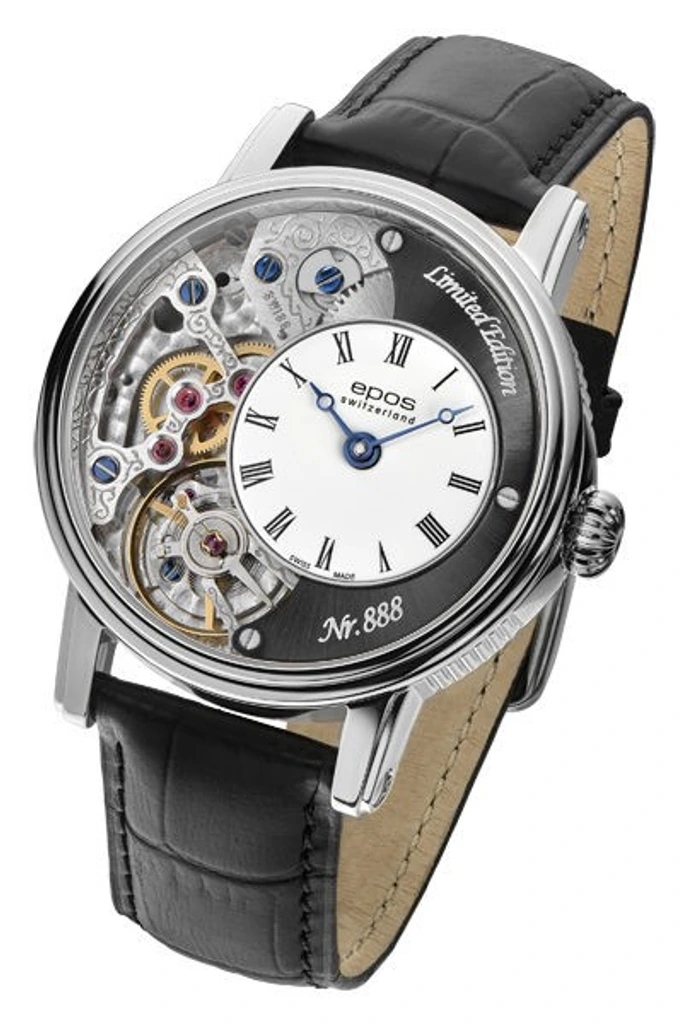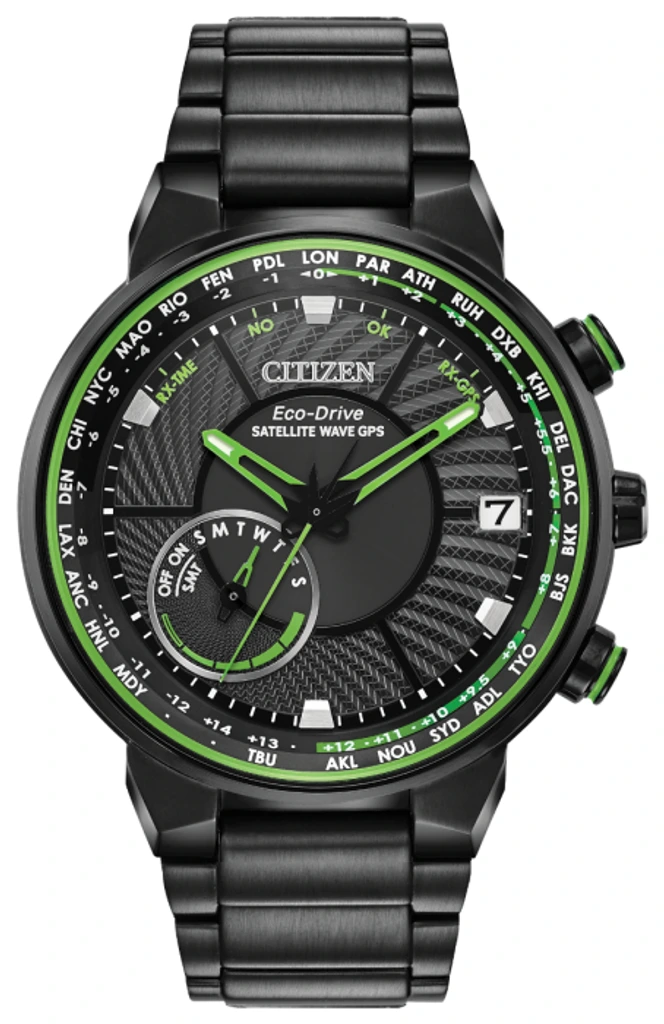
Quartz or mechanics? This is a question that has plagued mankind since the beginning of time. Well, to be more precise, since quartz movements powered by electricity became widespread. This happened in the 1970s. At that time, most users were clear - quartz movements are modern, cheaper and much more accurate!
Thanks to this, the so-called "Quartz Crisis" broke out in the world of watches. That pro meant big problems for traditional mechanical movements (and watchmakers with them). Fortunately, that time has passed since many watch enthusiasts have decided that the good old mechanical watch movement has something to it too. But with that, the original question is back. You can find clues in the article to crack it.
The absolute basis for deciding between quartz and automatic is to understand the basic features and principles of both technologies. In addition, their subsequent comparison with your own requirements and ideas. In short, you need to determine what you require from a watch and then know what the given watch offers. This is the only way to guarantee your maximum satisfaction, and that's what we at Helveti are all about.
So let's start with the traditional, that is, a watch with a mechanical movement. At the outset, I would like to explain a common mistake, i.e. that watches, referred to as mechanical, only have a manual crown winding.
Mechanical in the case of a watch means that only mechanical parts are used in the movement (no electronics) and consequently there are two options as to how the drive pen is pulled, which keeps the watch running.
The first option is a purely manual winding of the crown. Here it is necessary to wind the watch regularly. Today, this method is much less used and paradoxically we find it more in watchmaking more advanced and more expensive models, such as Maurice Lacroix Masterpiece Skeleton MP7228-SS001-000-1 or MeisterSinger N°02 AM6608N.
Sometimes these are really interesting movements with a large power reserve, such as the MeisterSinger Circularis Power Reserve CCP317G, where the power reserve reaches a respectable 10 days.
Nowadays, however, the vast majority of mechanical movements have automatic winding. This is provided by the automatic winding rotor. Therefore, mechanical watches are very often referred to as automatics, which is understandable given that this is the most common solution. In more advanced movements, automatic winding is complemented by the possibility of winding with a crown. However, some more basic pieces can only get by with automatic winding using a rotor.
The rotor of the automatic winding rotates due to the movement of the user, and this movement is converted into the winding of the drive pen. Therefore, if you wear the watch regularly, it is constantly tightened and there is no need to deal with its winding.
In my opinion, the most typical representatives of a self-winding movement are the Swiss ETA 2824 (and its equivalent Sellita SW200), which you can find, for example, in the Ball Engineer III Pioneer COSC NM2026C-S15CJ-BE universal watch. Next, the Seiko 4R series movement, which ticks, among other things, in the legendary Seiko SRPE99K1 - Special Edition PADI model.
So what are the advantages and disadvantages of mechanical watches?

However, mechanical movements also have certain weaknesses, so it is good to consider whether they will bother you or not. But what one cannot stand, another can appreciate.
Některé strojky se pak pyšní certifikací chronometru, což znamená zaručenou odchylku. V případě švýcarské certifikace COSC je to -4 až +5 sekund za den. Příkladem takového chronometru je například in-house strojek v hodinkách Ball Trainmaster Manufacture 80 Hours COSC NM3280D-S1CJ-BK. Ostatně u značky Ball je certifikace COSC velmi častou záležitostí.
Some movements then boast chronometer certification, which means a guaranteed deviation. In the case of Swiss COSC certification, it is -4 to +5 seconds per day. An example of such a chronometer is the in-house movement in the Ball Trainmaster Manufacture 80 Hours COSC NM3280D-S1CJ-BK watch. After all, for the Ball brand, COSC certification is a very common issue.
However, I must once again highlight the Ball brand, which is known for various shock protection patents for its purely mechanical watches. Higher resistance is also shown by the Swiss Certina, thanks to its DS (Double Security) concept.
Quartz movements have a completely different principle than mechanical movements. They are powered in most cases by a classic battery (we will get to the exceptions later). The word "quartz" refers to a quartz oscillator that oscillates much faster than the flywheel in a mechanical watch, resulting in many times greater accuracy. While for mechanics we talked about a deviation in seconds per day, with quartz movements we can count on a deviation in the order of seconds per month.
Another advantage of quartz is that the battery watch does not stop when it is put down without moving or winding. When put back on the hand, it runs with the same precision as when used. Classic battery watches are also usually cheaper than mechanical watches.
But quartz does not only have advantages, as it might seem - it also has several weaknesses.
Here, the machines, powered by a battery that is recharged by light, are the perfect safeguard. The strongest in this regard is the Japanese watch giant Citizen, whose Eco-Drive solar drive ensures trouble-free operation for about 10-15 years. However, we have already met customers for whom their Citizen Eco-Drive watch still works on the first battery even after 20 years. The battery can be replaced after it has reached the end of its service life, and this replacement currently costs about 1,000 CZK. Which I think is a negligible investment over a horizon of around 15 years.
Once you choose a truly quality light-powered quartz movement, you can logically count on a longer lifespan of around 20 years or more. At that point, I wouldn't be afraid to use such a watch as a beautiful gift with lasting value. And how about adding radio control, Super Titanium case and bracelet material, sapphire crystal and 100m water resistance like the hot new Citizen Worldtime Radio Controlled Super Titanium AT8234-85E? This is definitely not just ordinary cheap quartz that will last in a few years!
So is the high-frequency quartz in the Bulova 96B251 Special Edition Lunar Pilot Chronograph Watch, a watch with a literal cosmic history. I would definitely like such a gift

As a fan of mechanical watches myself, I can appreciate really interesting quartz movements and have several in my collection. For example, the GPS-controlled Citizen Satellite Wave CC3075-80E, or the aforementioned Bulova watch. How about the Bulova Accutron Spaceview 2020 2ES6A001? Surely you already understand that there is definitely no quartz like quartz and this technology should not be condemned even if you are rather a fan of excellent fine mechanics

Ať už usoudíte, že je pro Vás vhodnější strojek mechanický, nebo quartzový, ať už s manuálním či automatickým nátahem, na baterii, nebo poháněný světlem, jedno je vždy nejdůležitější. Hodinky vám musí především přinášet radost. A to jsou schopné splnit hodinky různých vlastností, nebo v jakékoliv cenové hladině. A my vám s tím u nás v Helveti vždy rádi pomůžeme Přijďte se poradit do prodejny, kde vám velké množství modelů předvedeme naživo, nebo si o radu napište na info@helveti.cz.
Whether you decide that a mechanical or quartz movement is more suitable for you, whether with manual or automatic winding, battery-powered or powered by light, one is always the most important. Above all, the watch must bring you joy. And watches of various characteristics or at any price level are able to fulfill this. And we at Helveti are always happy to help you with that. Come to the store for advice, where we will show you a large number of models live, or write to info@helveti.eu for advice.